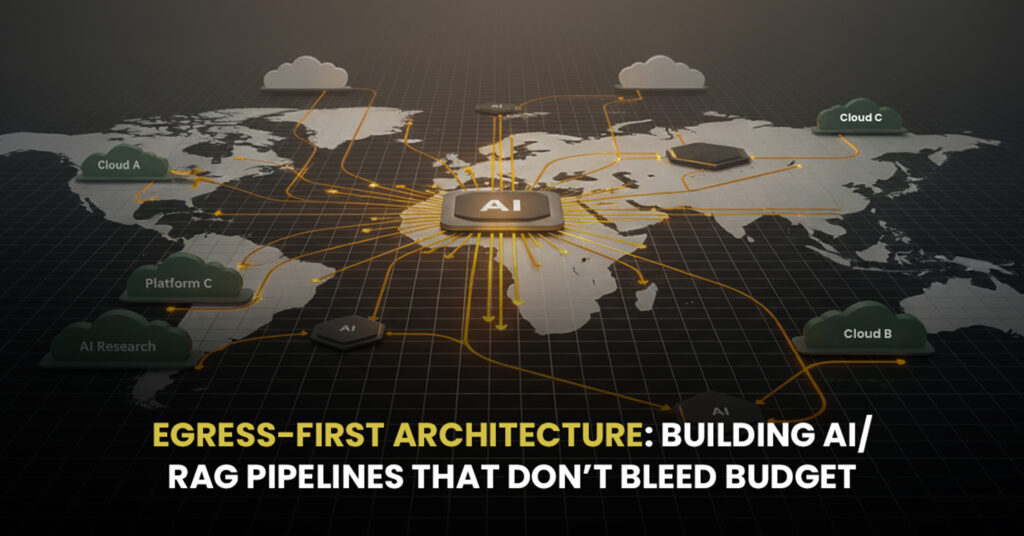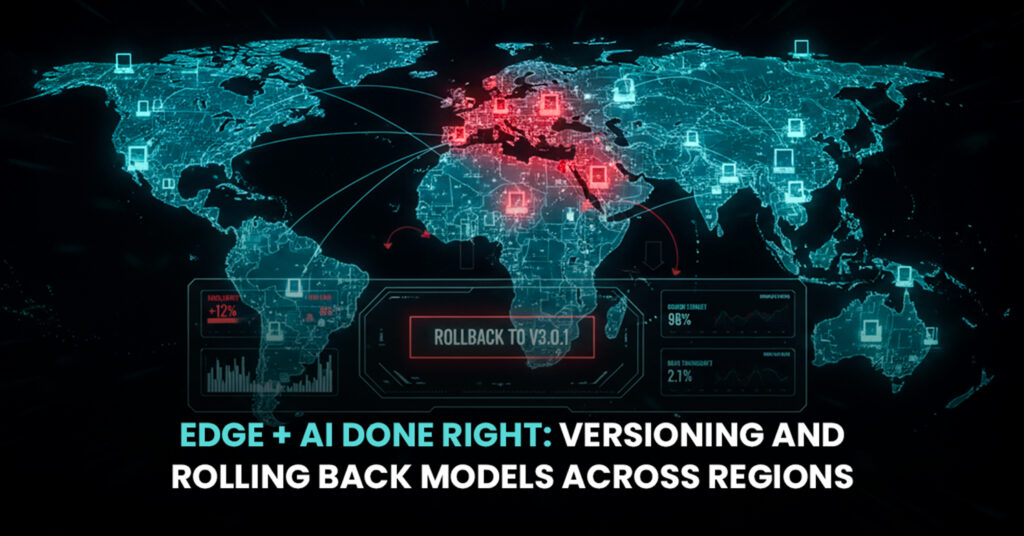Picture this: It’s 2 AM, and your CISO gets a call from the compliance team. “The auditors want to see evidence that our cloud infrastructure meets SOX requirements for the European data we’re processing under GDPR, and oh, by the way, they also want proof we’re handling the healthcare data according to HIPAA standards.”
Most companies would spend the next three weeks frantically gathering documentation, hoping they can prove compliance across multiple frameworks without finding any gaps that could trigger regulatory violations.
Our clients? They pull up a dashboard, click “Generate Compliance Report,” and have comprehensive evidence ready in minutes.
That’s the difference between hoping you’re compliant and knowing you are. It’s the difference between compliance as an afterthought and governance as a competitive advantage. And it’s exactly why enterprises across healthcare, financial services, and manufacturing are choosing CloudServ.ai’s governance framework over providers who treat compliance like a checkbox exercise.
The reality is that modern enterprises don’t operate in single regulatory environments. A hospital system might need HIPAA compliance for patient data, SOX compliance for financial reporting, and GDPR compliance for European operations all running on the same cloud infrastructure. Traditional cloud governance approaches crumble under this complexity, forcing enterprises to choose between innovation and compliance.
We built our governance framework around a different philosophy: compliance should accelerate business outcomes, not constrain them.
The Compliance Complexity That’s Breaking Traditional Cloud Strategies
Let’s be honest about what enterprise compliance actually looks like in 2025. It’s not just about checking boxes for a single regulatory framework it’s about navigating an interconnected web of requirements that span jurisdictions, industries, and data types.
A global financial services firm might process transactions that fall under SEC regulations in the US, MiFID II in Europe, and local banking regulations in Asia-Pacific markets. The same cloud infrastructure needs to handle SOX compliance for financial reporting, PCI-DSS for payment processing, and emerging AI governance requirements for algorithmic trading systems.
Healthcare organizations face even more complexity. Patient data requires HIPAA protection, but if you’re part of a health insurance network, you also need compliance with state insurance regulations. International operations add GDPR requirements, and if you’re conducting medical research, suddenly you’re dealing with FDA validation requirements and clinical trial data integrity standards.
The Traditional Governance Failure Pattern
Most cloud providers approach compliance with what we call “framework tunnel vision.” They’ll get really good at one specific compliance area say, HIPAA for healthcare or PCI-DSS for payment processing but completely miss the interconnected nature of modern enterprise compliance.
The result? Enterprises end up with governance approaches that work great for 80% of their compliance needs but create blind spots that auditors find faster than you can say “material weakness.” They’re forced to layer multiple compliance solutions on top of each other, creating complexity that actually increases risk rather than reducing it.
We’ve seen companies spend millions implementing cloud governance frameworks that technically meet individual regulatory requirements but fail spectacularly when auditors start asking questions about cross-framework integration and data lineage across multiple compliance domains.
CloudServ.ai’s Unified Governance Architecture
Our governance framework started with a simple but revolutionary premise: what if compliance could be automatic instead of accidental? What if regulatory requirements could be embedded directly into cloud infrastructure, making compliance violations technically impossible rather than just unlikely?
The Multi-Framework Compliance Engine
At the heart of our governance framework is technology that speaks fluent regulatory language across industries. Our compliance engine doesn’t just monitor for violations it prevents them by translating regulatory requirements into technical controls that are automatically enforced.
When GDPR requires data to be deletable on request, our system automatically implements data lifecycle controls that can locate and remove personal information across your entire cloud infrastructure. When SOX requires segregation of duties for financial controls, our access management system automatically enforces role separation and maintains audit trails for all administrative actions.
The magic happens in the translation layer. Regulatory requirements like “maintain data integrity throughout processing” become specific technical implementations like “automated backup verification with cryptographic checksums” and “real-time data corruption detection with automatic recovery procedures.”
Industry-Specific Governance Templates
Different industries don’t just have different regulations they have different risk profiles, operational requirements, and business contexts that affect how compliance should be implemented. Our governance framework includes pre-built templates that understand these industry nuances.
Healthcare governance templates know that patient data access needs to be logged differently than administrative data access. Financial services templates understand that trading system access requires different controls than customer service system access. Manufacturing templates recognize that engineering data has different export control requirements than marketing data.
These aren’t just configuration files they’re comprehensive governance blueprints developed through years of working with auditors, compliance officers, and regulatory specialists across different industries.
Real Governance Success: When Compliance Becomes Competitive Advantage
Healthcare Network: Turning HIPAA Compliance into Patient Care Innovation
A 23-hospital healthcare network came to us with a challenge that had stumped three other cloud providers. They needed cloud infrastructure that could handle patient data across multiple states, each with different healthcare privacy requirements, while enabling advanced analytics for population health management.
Previous providers had proposed compliance solutions that essentially locked down their data so tightly that advanced analytics became impossible. The choice seemed to be between compliance and innovation exactly the kind of false choice that keeps healthcare technology stuck in the past.
Our governance framework took a different approach. Instead of restricting data access, we implemented intelligent data controls that enabled broader access while maintaining stricter compliance. Patient data was automatically classified and protected according to the most restrictive applicable regulation, but authorized research and analytics could access anonymized datasets that preserved privacy while enabling medical insights.
The breakthrough moment came when their population health team discovered they could analyze patient outcomes across their entire network for the first time, identifying treatment patterns that improved care while maintaining perfect HIPAA compliance.
Results that matter:
- Zero HIPAA violations across 18 months of cloud operations
- 67% reduction in compliance preparation time for audits
- Population health analytics that improved patient outcomes by 23%
- Automated breach detection and notification within required timeframes
Financial Services: Multi-Jurisdictional Compliance That Actually Scales
A global investment firm managing assets across 15 countries needed cloud governance that could handle the regulatory complexity of international financial operations. Their existing compliance approach required different systems for different jurisdictions, creating operational overhead that was becoming unsustainable.
Our governance framework unified their compliance across all jurisdictions while respecting local regulatory requirements. Data processing in European markets automatically followed GDPR requirements, while US operations maintained SOX compliance for financial reporting, and Asian markets complied with local banking regulations all through a single, integrated governance platform.
The real win? When regulators in three different countries conducted simultaneous audits, our automated compliance reporting generated all required evidence within hours instead of the weeks typically required for manual compliance documentation.
Business impact:
- 89% reduction in manual compliance effort across all jurisdictions
- Real-time regulatory reporting instead of quarterly compliance cycles
- Zero regulatory violations across multiple simultaneous audits
- $4.2M annual savings through automated compliance operations
The Technology That Makes Governance Actually Work
Compliance-as-Code Implementation
Traditional governance relies on humans to remember compliance requirements and manually implement controls. Our approach embeds compliance directly into infrastructure code, making it impossible to deploy non-compliant configurations.
When developers deploy new applications, our governance framework automatically applies the appropriate compliance controls based on data classification, regulatory requirements, and business context. A healthcare application automatically gets HIPAA controls. A financial reporting system automatically implements SOX requirements. A customer-facing application automatically applies privacy regulations.
Predictive Compliance Analytics
Here’s where it gets really interesting. Our governance framework doesn’t just monitor current compliance it predicts future compliance risks based on usage patterns, regulatory changes, and business evolution.
Machine learning models analyze your compliance data to identify trends that could indicate emerging risks. If data access patterns suggest potential HIPAA violations, the system alerts compliance teams before any actual violation occurs. If financial reporting patterns indicate potential SOX control weaknesses, automated recommendations help strengthen controls proactively.
Cross-Platform Governance Integration
Enterprise compliance isn’t contained within single platforms. Your governance framework needs to work across Oracle databases, AWS services, third-party applications, and on-premises systems that may never migrate to the cloud.
Our governance platform provides unified compliance monitoring across all these environments. Oracle database access controls integrate seamlessly with AWS IAM policies. Compliance reporting includes activities across your entire technology stack. Audit trails span from on-premises Oracle transactions to cloud-native AWS analytics.
Why Proactive Governance is Winning Enterprise Deals
The enterprise cloud market has evolved beyond the “move fast and break things” mentality that worked for startups. Enterprise buyers are looking for cloud providers who understand that compliance isn’t just about avoiding regulatory violations it’s about enabling business capabilities that weren’t possible with traditional governance approaches.
The Competitive Reality
Companies with proactive governance frameworks move faster than their competitors, not slower. When everyone else is spending weeks preparing for audits, our clients are spending that time on strategic initiatives. When competitors are struggling with regulatory approval for new business lines, our clients are launching new services with built-in compliance.
The market has noticed. Enterprises are increasingly making cloud provider decisions based on governance capabilities rather than just technical features. The providers who understand this shift are winning deals that seemed impossible just two years ago.
Innovation Through Governance
The best part about proactive governance? It doesn’t just protect you from regulatory risks it enables business capabilities that create competitive advantages. Healthcare organizations can perform population health analytics that improve patient outcomes. Financial services firms can launch new products faster through automated regulatory validation. Manufacturing companies can optimize global supply chains while maintaining export control compliance.
Governance becomes the foundation for innovation rather than a barrier to it.
Building Your Governance Competitive Advantage
The regulatory landscape isn’t getting simpler. New privacy regulations, emerging AI governance requirements, and increasing cybersecurity mandates mean that enterprises need governance frameworks that can evolve with changing requirements.
Traditional compliance approaches that rely on manual processes and periodic assessments can’t keep pace with modern regulatory complexity. The enterprises that thrive will be those that implement governance frameworks intelligent enough to handle current requirements while adaptable enough to evolve with future regulations.
Your Strategic Opportunity
CloudServ.ai’s governance framework isn’t just about avoiding regulatory violations, it’s about creating sustainable competitive advantages through superior compliance capabilities. While your competitors struggle with manual compliance processes, you’ll be launching new initiatives with built-in regulatory protection.
Ready to transform compliance from cost center to competitive advantage? Let’s start with a governance readiness assessment that maps your current compliance landscape and shows exactly how automated governance could accelerate your business outcomes while strengthening regulatory protection.
Because in today’s regulatory environment, the question isn’t whether you need better governance it’s whether you’ll implement it before your competitors do.



